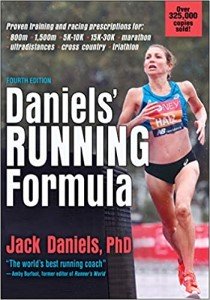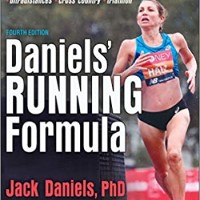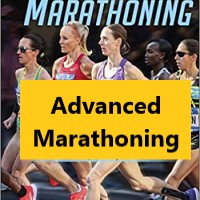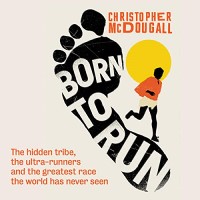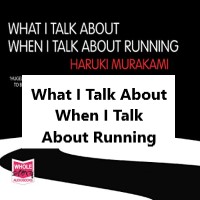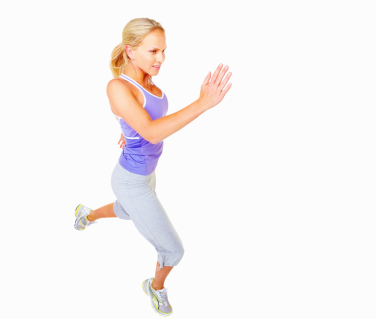Daniels Running Formula Book Review - The Running Training Book You Have Got to Have
If you were allowed to have one running book only I would probably recommend you to get Daniels Running Formula.
I love this book.
Why?
In a nutshell... this book teaches you:
Daniels provides good advice whether you are training for a 1500 metre-race, a marathon, or anything in between.
With this book in your hands, you can design any running program for any distance ranging from 800m/1500m to the marathon. I have personally used the principles out of this book and the running program templates to build successful running programs.
And moreover, thanks to the book, you know why you do it that way.
Daniels offers the template for your running program, and you know how to fill in the blanks.
That's the single biggest reason why this book is always by the side of my bed.

In short, top-coach Jack Daniels overdelivers in this outstanding book. After reading his book you will know a lot more about how you can improve your running by setting up a good running program.
You will not know everything there is to know; there is no information in the book about stretching, a runners' diet and running economy for example. But Daniels' Running Formula will help you make your running training so much more effective and, if you will, more intelligent.
Who Should Read This Book?
I am tempted to say: every runner.
When you are a casual runner, and you are happy with the running programs you find on the net, then I'd say this book might be lost on you.
But if you want to improve your performance, understand why a running program is set up a certain way, why you do the types of runs you do and how you can maximize performance with the least amount of discomfort, then Daniels Running Formula is definitely the book to get.
Contents
In Chapter 1 Jack Daniels introduces ten training principles.
These principles are not ground-breaking.
But they lay the foundation for Daniels' approach.
Because the training principles are of a general nature Daniels' Running Formula caters for a large crowd.
Not only elite-runners, not only newbies, but every runner out there.
I go back to these principles all the time, e.g. the hard/easy principle, which says that a hard day of running should be followed by an easier effort. I use this principle in designing running programs, but also in answering questions from readers of this website.
Chapter 2 lays out the components of running performance.
Daniels identifies six components; a few of them are:
Then these components are translated into different types of running training (easy runs, long runs, threshold running etc.). Jack Daniels emphasises that every time you go on a run, you need to know which body system you are training and what for.
This section is starting to build your running intelligence and asks you to get conscious about why you are doing your intervals, your tempos and yes, your easy runs. A mistake many of us make is to run our easy runs too fast. With the knowledge of what happens in your body at the different paces you run at, it becomes easier to slow down. Because you know why you are doing what you are doing!

Chapter 3 introduces Daniels' Running Formula.
Daniels uses VDOT, a reference number based on recent race times or time trials.
It defines your current abilities and the paces you should be training at. It is called VDOT.
Daniels says "When you know your VDOT, you can eliminate a great deal of guesswork from training, and avoid overtraining."
I like that he puts a lot of emphasis on preventing injuries and overtraining.
Throughout the whole book you can find his "better safe than sorry"-approach.
Chapter 3 contains two important graphs.
One graph gets you to establish your VDOT based on race times. The second graph uses your VDOT to establish how fast to do the different types of running training identified in Chapter 2.
These are very helpful and pretty accurate. I have used these relations time and time again in the past to work out appropriate running training paces and for prediction of race times.
In Chapter 4 to 7 Daniels explains the types of running training thoroughly. Knowing how fast to do a certain type of running training which you learnt in Chapter 3 is really only half the picture.
Daniels explains how he wants you to build up your mileage, how much rest to take in between intervals and so on. There is much valuable information in these chapters.
I highly recommend re-reading these chapters (heck, you should read the whole book at least a dozen times!) a few times so that you pick up on all he is saying here.
And again, as said before, he often helps you focus on preventing injuries. Sub-headings like "Don't do too much too fast" and "Don't push yourself past the proper intensity" say it all.
Another incredibly valuable chapter is Chapter 8.
Many, many runners out there do the same type of running training every week again. Chapter 8 explains that, when training for a specific event, your training needs to go through separate phases. Daniels identifies four phases:
Daniels says that in an ideal world each phase would be six weeks in length. So twenty-four weeks in total leading up to your key event. He recognizes however that in reality, many runners do not use a 24-week running program.
So that's why he gives you an overview which shows you how long each phase should be if you use a shorter number of weeks. How convenient!
This section really allows you to start building your own running program whether it is 10, 12, 15 or 19 weeks or any other length!
Chapter 9 is focused on what happens when injuries do happen or when you do have to take time of running. It also answers the question of how to get back to your level of running training following a setback.
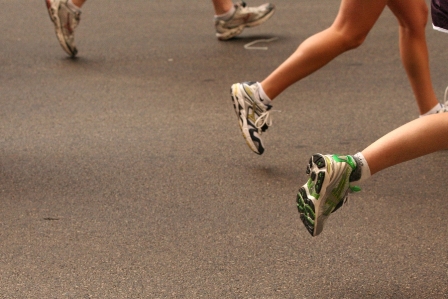
If I'd have to say anything negative about this book, then it would be that Chapter 10, "Utilizing your training environment", is a bit unnecessary. He explains how to deal with flat terrain, hills, wind and altitude et cetera. Nothing wrong with that, it's an effort to be complete and explain the impacts of these components on running performance, but the book would not have been any worse without this chapter, that's all.
Chapter 11 is about preparing for competition, such as defining your goals, deciding how many races and which races to do, preparing for your race, your race-day routine, ideas for a pre-race warming up and so on.
I especially like the parts where Daniels talks about the vigours of the race and that there will be moments when you will not be feeling all that great: "I remind my runners that if they find themselves feeling lousy as they run alongside a group of other runners, they should realize that those around them must be feeling at least as terrible or they would be ahead of my runners."
I use this thought often. There have been ultras I have run in which I felt terrible. The simple realization that I wasn't the only one feeling bad, and that nobody was passing me made me feel better and made me realize that maybe I was simply felt this way at this stage in the race!
He also explains what to do in moments like those. One tactic which might seem funny is "When struggling... speed up". This one was an eye-opener for me and has helped me quite a few times since.
It works, but your race needs to be short enough. Eventually, reality kind of catches up with you.. :)
Chapter 12 to 14 give you the 24-week program templates for any race from 1.500 metres to a marathon. With the knowledge gained in the previous chapters you can add your own twist to these programs and develop your own running schedule.
This is the part I go back to again and again. I write a lot of my running programs based on experience now. But it is always good to check back with these templates and compare what I have put together with Daniels' templates. It is like being able to consult a running training mentor on demand, any time you like. And it gives you the certainty that you are training in one of the best ways possible!
Conclusion
Daniels' Running Formula is a must-have.
It will teach you not only how to run and how fast to run.
The
book will also help you build up your knowledge of
running. Pretty much upto a
point where you'll be pretty comfortable creating your own running
programs from scratch.
Click here for more information about Daniels' Running Formula
This page contains affiliate links, meaning that if you decide to buy something through this link, I will get paid a small commission. I only use affiliate links for products I can fully recommend.
Home > Running Books > Daniel's Running Formula
